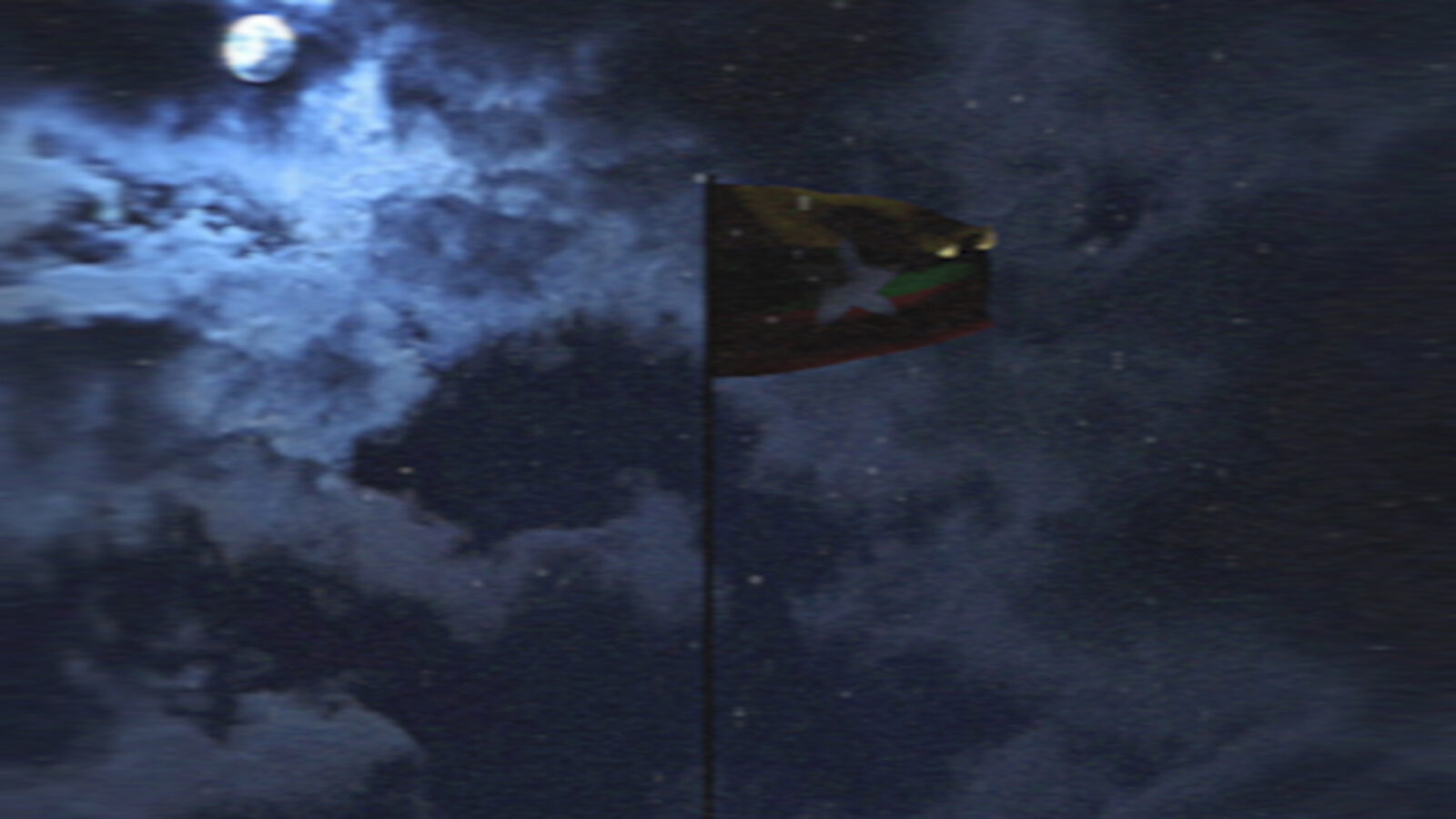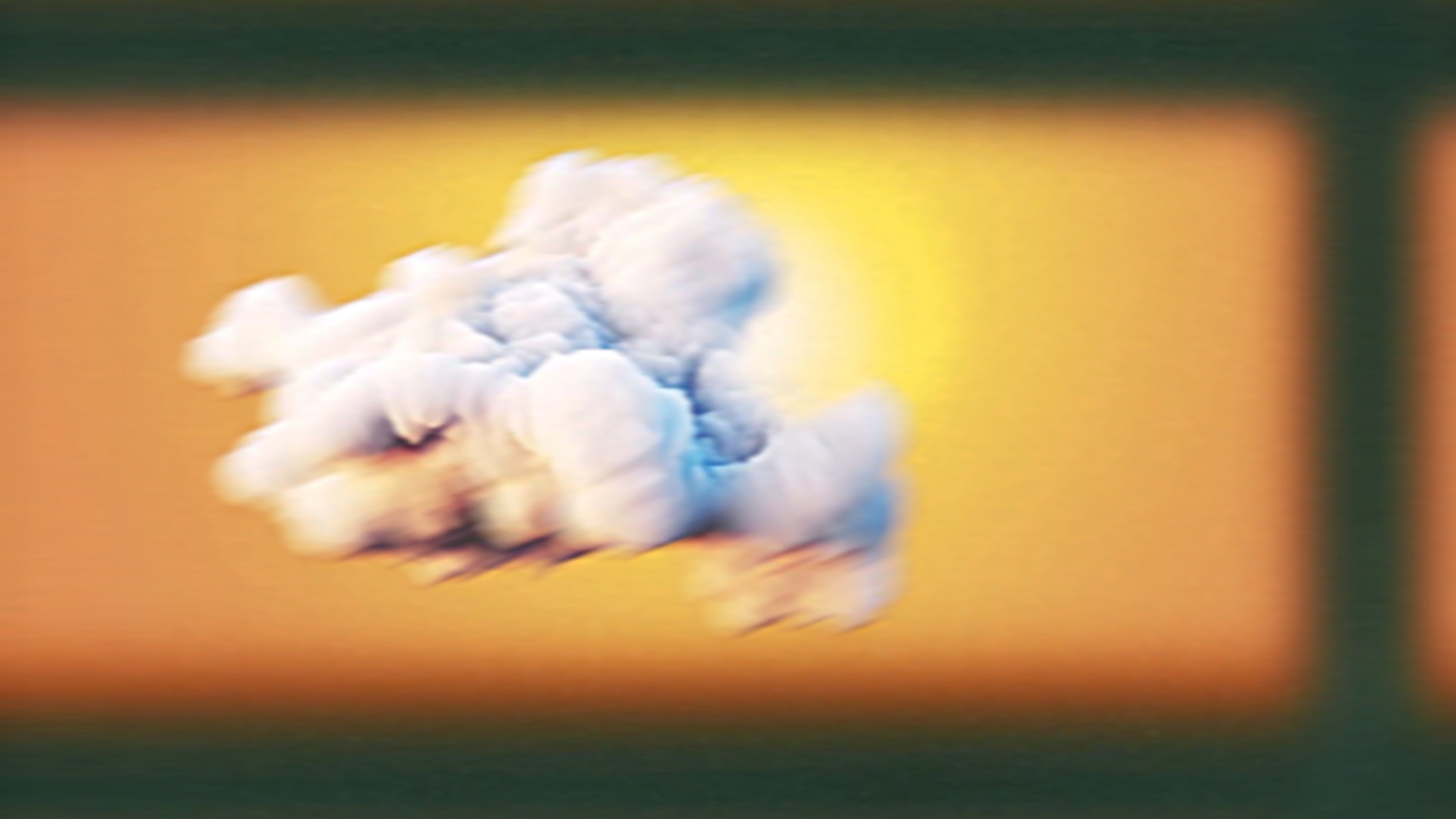Cinema of Traces
Interview with Lin Htet Aung
Growing up under Myanmar’s dictatorship, Lin Htet Aung’s Tiger Short Award-winning A Metamorphosis tackles regime propaganda through abstraction and symbolism. In this interview, he discusses the politics and poetry of his artistic practice.

When I asked Lin Htet Aung how he first became interested in experimental cinema and filmmaking, he told me a story. Years ago, seeking refuge from the Myanmar summer heat in a nearly empty cinema, Lin Htet Aung found himself sitting through the end of a film that consisted of nothing more than a man and woman silently staring at each other for twenty minutes. Most of the audience walked out in frustration, but a handful of people stayed. It was then that Lin realised two things: One, cinema doesn’t need to entertain; it can provoke confusion, discomfort, even anger. And two, such are the films he is interested in making.
In the wake of this experience, in 2017, Lin decided to become a self-taught filmmaker, developing the skills that would help him make experimental shorts. Eight years later, when A Metamorphosis premiered at the International Film Festival Rotterdam (IFFR), it won the Tiger Short Award. The film repurposes the unnerving familiarity of state propaganda into a haunting “counter-broadcast” (according to IFFR’s Koen de Rooij), using distorted sound and images, rhythm introduced through the insertion of black frames, repetitive lullabies, and a surreal aesthetic to outline the emotional textures of life under dictatorship.
In our conversation during the Hamburg Short Film Festival, where A Metamorphosis was screened in the international competition, Lin discussed politics, abstraction, symbolism, and his broader artistic practice. He reflected on the possibility of translating personal and political histories not just into images, but into archives of sensory experiences.
Given Myanmar’s long history of military rule and propaganda, and the strong political themes present in many of your works, how would you describe your relationship to it?
I come from a rather lower-class family, and we were confronted with politics basically every day. Although we couldn’t engage with these issues on an intellectual level, it was still part of our daily lives. Every time the politics changed, it directly affected us. Political figures became like celebrities, and the colours of the two main parties—red and green—appeared everywhere. It was an extremely strong political, but also visual presence.
The colours red and green also appear prominently in A Metamorphosis. How would you describe their significance here?
They are a crucial part of the film. I made three black-and-white films before, and this time I knew I wanted to use colour—specifically, those of our national flag: yellow, green, red, and white. I thought about colour in every frame: which ones are present, how they are balanced, and what their proportions mean. In a way, they guide the visuals, perhaps even dictating what happens in any given scene.
You mentioned the Myanmar national flag. Could you elaborate on the use of those three colours?
This flag was interesting to me because it is relatively new—it was created by the military in 2010. The old flag looked kind of similar to the Taiwanese flag, where the red field dominates and there’s a blue square in the top left-hand corner. But in Myanmar’s current flag, the blue has been completely removed, and this stood out to me. I used blue with particular intention—not as part of the flag, but symbolically, as a representation of hope and possibility. The sky became a metaphor for that, as did the news ticker at the bottom of the frame, which, instead of delivering typical propaganda, communicates messages of hope and change, reclaiming the format to signal transformation. There may not always be characters in the frame, but the colours are, in a way, characters.
The film’s more direct voice-over sits in stark contrast with its visuals. Also, the repetitive lullaby, voiced by an AI modelled on the current military leader Min Aung Hlaing, literally lulls the viewer into submission. How did you arrive at this artistic decision?
I have been studying in Germany and working on this film since 2024. Being abroad gave me more freedom to speak more directly about my country—something I couldn’t really do before. This is why my earlier films addressed politics indirectly, metaphorically, and poetically. At the same time, I did not want to make a political film like many I’ve seen before, like those from Myanmar or elsewhere, by using footage of protests and violence committed by the military government. The film is not meant as a political lesson for international audiences but to stand on its own, inviting viewers, also from Myanmar, to engage with it and reflect.
You could argue that the function of propaganda is to stop people from thinking critically, so making a film that doesn’t deliver a straightforward political message in an easy-to-digest, linear narrative makes a lot of sense.
Yes. At the same time, propaganda is not always easy to decipher, as it doesn’t have to force a clear message [on the receiver]. Instead, in Myanmar, they opt for sweetness by broadcasting a lot of romantic comedies or soap operas. But at the same time, at the bottom of the screen, they show brutal news or propaganda messages enforcing control. This contrast between what is shown and what is communicated also informs A Metamorphosis.
You were writing poetry before turning to filmmaking. How did you start writing?
I started writing poetry during the brief democratic period [2015–2020] after the former military government [1988–2011]. I was attending [Rangoon Institute of Technology], a renowned engineering school, which had a history of political activism—it had reopened during that time after being shut down for twenty years. There was a strong sense of hope and freedom. Many of the engineering students there chose that path not because they had a particular interest in becoming engineers, but because of the university’s critical political past and reputation. Literature and poetry groups sprang up in many universities, and we organised forums and events. We didn’t connect much with the older generation of political poets; we felt it was a new era, and we wanted to move forward and write about different things. My friends and I wrote poems, published underground books, and were part of a growing student poetry movement.
But that hope was short-lived. After five years, the military took control again.

A Metamorphosis (Lin Htet Aung, 2025)
Poetry and film both rely on rhythm, pace, and symbolism. Do you think that is what drew you to filmmaking?
I was already interested in film from the age of 12 or 13, though at the time I had only been exposed to mainstream and commercial cinema—Hollywood or local romance or comedy films. When I started writing poems, it did not feel like I was creating poetry. It was more like searching for poetry, trying to understand what it was. I was drawn to it as something abstract and undefined. I wanted to find out what people meant when they talked about poetry. I joined poetry groups, attended readings, and tried writing, but my work always came out more like visual sketches—full of images and colours. I was using words, but not in the way poetry traditionally works, by playing with the words and how they relate.
But I don’t naturally think in those terms. I’m not someone who usually talks much, and I often keep to myself. So I don’t have many words to play around with. That’s why everything I wrote down was mostly visual, like translating images into words. Even now, I’m not sure if I’ve ever truly written poems.
A Metamorphosis evokes a strong sense of history repeating itself and the overwhelming influence of political figures. Still, signs of potential transformation emerge—in the blue news ticker and the door that gradually opens. Do you view the film as optimistic?
I care a lot for optimism and optimistic endings. However, I am still very much in the process of developing my film style and language. Every project is still forming—less like a circle, more like a triangle. Until now, my short films are more like traces of something. Something that captures and preserves the emotional experience of living in Myanmar under a military regime. I want future generations, when looking back, to be able to understand more than just the facts of that time, but also the feeling [of the past].
Your next project, Making a Sea, will be a feature film. Do you think your style will change with this new format?
Actually, I think each one of my films is quite different from the others. They all have different needs and styles, shaped by what they express and what themes and topics they engage with. For Making a Sea, there is going to be one major difference, as I plan to focus more on my own voice, perspective, and past experiences, rather than just observing what I see. With A Metamorphosis, I was interested in the language and the visual style used by the military government and wanted to use these elements to make a new piece. All that makes it hard to say that the film is “my style.” Sure, the story and the language [of the film] are mine, but at the same time, these are elements that come from elsewhere, even if I’ve reinvented and reconstructed them.
This really interests me in filmmaking—creating works that not only speak to an audience, but also speak to the people, institutions, and contexts from which these elements originally came.
